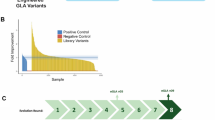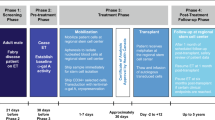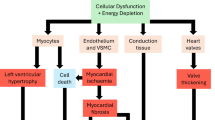Abstract
Total or partial deficiency of the human lysosomal hydrolase α-galactosidase A is responsible for Fabry disease, the X-linked inborn error of glycosphingolipid metabolism. Together with the predominant α-galactosidase A gene mRNA product encoding the lysosomal enzyme, a weakly regulated alternatively spliced α-galactosidase A transcript is expressed in normal tissues, but its overexpression, due to the intronic g.9331G>A mutation, leads to the cardiac variant. We report the molecular characterization of five Fabry patients including two siblings. Sequencing analysis of the α-galactosidase A gene coding region and intron/exon boundaries identified the new c.124A>G (p.M42V) genetic lesion as well as a known deletion in three patients, whereas in the two remaining patients, no mutations were identified. To evaluate possible α-galactosidase A gene transcription alterations, both predominant and alternatively spliced mRNAs were quantified by absolute real-time PCR on total RNA preparations from the patients' fibroblasts. An impressive reduction in the predominant α-galactosidase A transcript was detected in the last patients (Pt 4 and Pt 5). However, the alternatively spliced mRNA was dramatically overexpressed in one of them, carrying a new intronic lesion (g.9273C>T). These findings strongly suggest a correlation between this new intronic mutation and the unbalanced α-galactosidase A mRNAs ratio, which could therefore be responsible for the reduced enzyme activity causing Fabry disease. The real-time assay developed here to investigate the two α-galactosidase A mRNAs might play a crucial role in revealing possible genetic lesions and in confirming the pathogenetic mechanisms underlying Fabry disease.
Similar content being viewed by others
Log in or create a free account to read this content
Gain free access to this article, as well as selected content from this journal and more on nature.com
or
References
Desnick RJ, Ioannou YA, Eng CM : Fabry disease: α-galactosidase A deficiency; in Scriver C, Beaudet A, Sly W, Valle D (eds): The Metabolic and Molecular Bases of Inherited Disease, 7th edn. New York: McGraw-Hill, 2001, pp 3733–3774.
Desnick RJ, Brady R, Barranger J et al: Fabry disease, an under-recognized multysistemic disorder: export recommendations for diagnosis, management, and enzyme replacement therapy. Ann Intern Med 2003; 138: 338–346.
Shabbeer J, Yasuda M, Benson SD, Desnick RJ : Fabry disease: Identification of 50 novel α-galactosidase A mutations causing the classic phenotype and three-dimensional structural analysis of 29 missense mutations. Hum Genomics 2006; 2: 297–309.
Elleder M, Bradova V, Smid F et al: Cardiocyte storage and hypertrophy as a sole manifestation of Fabry's disease. Report on a case simulating hypertrophic non-obstructive cardiomyopathy. Virchows Arch A Pathol Anat Histopathol 1990; 417: 449–455.
Frustaci A, Chimenti C, Ricci R et al: Improvement in cardiac function in the cardiac variant of Fabry's disease with galactose-infusion therapy. N Engl J Med 2001; 345: 25–32.
Nakao S, Kodama C, Takenaka T et al: Fabry disease: detection of undiagnosed hemodialysis patients and identification of a ‘renal variant’ phenotype. Kidney Int 2003; 64: 801–807.
Ishii S, Nakao S, Minamikawa-Tachino R, Desnick RJ, Fan JQ : Alternative splicing in the alpha-galactosidase A gene: increased exon inclusion results in the Fabry cardiac phenotype. Am J Hum Genet 2002; 70: 994–1002.
Eng CM, Guffon N, Wilcox WR et al: Safety and efficacy of recombinant human alpha-galactosidase A replacement therapy in Fabry's disease. N Engl J Med 2001; 345: 9–16.
Schiffmann R, Kopp JB, Austin III HA et al: Enzyme replacement therapy in Fabry disease: a randomized controlled trial. JAMA 2001; 285: 2743–2749.
Desnick RJ, Brady RO : Fabry disease in chilhood. J Pediatr 2004; 144: S20–S26.
Potratz A, Huttler S, Bierfreund U, Proia RL, Suzuki K, Sandhoff K : Quantification of m-RNAs encoding proteins of the glycosphingolipid catabolism in mouse models of GM2 gangliosidoses and sphingolipid activator protein precursor (prosaposin) deficiency. Biochim Biophys Acta 2000; 502: 391–397.
Rice JE, Sanchez JA, Pierce KE, Wangh LJ : Real-time PCR with molecular beacons provides a highly accurate assay for detection of Tay-Sachs alleles in single cells. Prenat Diagn 2002; 22: 1130–1134.
Hermans MM, van Leenen D, Kroos MA et al: Twenty-two novel mutations in the lysosomal alpha-glucosidase gene (GAA) underscore the genotype–phenotype correlation in glycogen storage disease type II. Hum Mutat 2004; 23: 47–56.
Dhami R, Passini MA, Schuchman EH : Identification of novel biomarkers for Niemann–Pick disease using gene expression analysis of acid sphingomyelinase knockout mice. Mol Ther 2006; 13: 556–564.
Lualdi S, Di Rocco M, Corsolini F et al: Identification of nine new IDS alleles in mucopolysaccharidosis II. Quantitative evaluation by real-time RT-PCR of mRNAs sensitive to nonsense-mediated and nonstop decay mechanisms. Biochim Biophys Acta 2006; 1762: 478–484.
Lualdi S, Pittis MG, Regis S et al: Multiple cryptic splice sites can be activated by IDS point mutations generating misspliced transcripts. J Mol Med 2006; 84: 692–700.
Caciotti A, Donati MA, Procopio E et al: GM1 gangliosidosis: molecular analysis of 9 patients and development of an RT-PCR assay for GLB1 gene expression profiling. Hum Mut 2007; 28: 204.
Morrone A, Cavicchi C, Bardelli T et al: Fabry disease: molecular studies in Italian patients and X inactivation analysis in manifesting carriers. J Med Genet 2003; 40: e103.
den Dunnen JT, Antonarakis SE : Mutation nomenclature extensions and suggestions to describe complex mutations: a discussion. Hum Mutat 2000; 15: 7–12.
den Dunnen JT, Paalman MH : Standardizing mutation nomenclature: why bother? Hum Mutat 2003; 22: 181–182.
Kornreich R, Bishop DF, Desnick RJ : Alpha-galactosidase A gene rearrangements causing Fabry disease. Identification of short direct repeats at breakpoints in an Alu-rich gene. J Biol Chem 1990; 265: 9319–9326.
Shin SH, Murray GJ, Kluepfel-Stahl S et al: Screening for pharmacological chaperones in Fabry disease. Biochem Biophys Res Commun 2007; 359: 168–173.
Ishii S, Chang HH, Kawasaki K et al: Mutant alpha-galactosidase A enzymes identified in Fabry disease patients with residual enzyme activity: biochemical characterization and restoration of normal intracellular processing by 1-deoxygalactonojirimycin. Biochem J 2007; 406: 285–295.
Acknowledgements
The cell lines of the two brothers and two additional patients, one male and one female, with the classic phenotype were obtained from the ‘Cell Line and DNA Bank from Patients Affected by Genetic Diseases’ collection (http://www.gaslini.org/labdppm.htm). This paper was partially financed by grants: Genzyme grant n.104 19/2007, Fondi Ateneo (MURST ex 60%). We gratefully thank Professor Claudio Orlando from the Department of Clinical Physiopathology University of Florence, Florence, Italy, for the technical support for real-time PCR setting-up and a critical discussion of the manuscript.
Author information
Authors and Affiliations
Corresponding author
Rights and permissions
About this article
Cite this article
Filoni, C., Caciotti, A., Carraresi, L. et al. Unbalanced GLA mRNAs ratio quantified by real-time PCR in Fabry patients' fibroblasts results in Fabry disease. Eur J Hum Genet 16, 1311–1317 (2008). https://doi.org/10.1038/ejhg.2008.109
Received:
Revised:
Accepted:
Published:
Issue date:
DOI: https://doi.org/10.1038/ejhg.2008.109
Keywords
This article is cited by
-
All reported non-canonical splice site variants in GLA cause aberrant splicing
Clinical and Experimental Nephrology (2023)
-
Identification and functional characterization of the first deep intronic GLA mutation (IVS4+1326C>T) causing renal variant of Fabry disease
Orphanet Journal of Rare Diseases (2022)
-
Double-target Antisense U1snRNAs Correct Mis-splicing Due to c.639+861C>T and c.639+919G>A GLA Deep Intronic Mutations
Molecular Therapy - Nucleic Acids (2016)
-
Increased glycolipid storage produced by the inheritance of a complex intronic haplotype in the α-galactosidase A (GLA) gene
BMC Genetics (2015)
-
A classical phenotype of Anderson-Fabry disease in a female patient with intronic mutations of the GLA gene: a case report
BMC Cardiovascular Disorders (2012)



